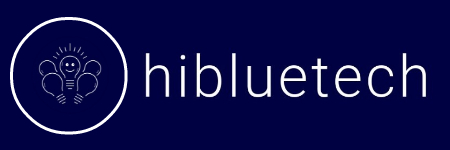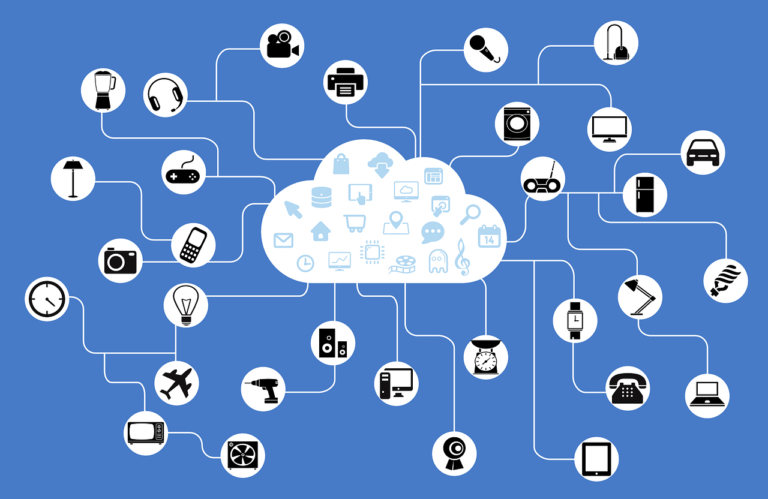Imagine a world in which your coffee maker uses your alarm to determine the precise time to brew your morning tea or coffee. That is the Internet of Things’ (IoT) magic. It makes ordinary objects become smart gadgets by connecting them into the digital world and allowing them to collect and exchange data through the internet.
According to the Global System for Mobile Communications Association (GSMA), IoT is a “network of physical objects embedded with technology to communicate, sense, or interact with their surroundings.” This means that devices once considered “dumb” like a doorbell or a light bulb can now become “smart,” allowing them to communicate data, perform tasks autonomously.
IoT creates a bridge between the digital and physical worlds by integrating sensors and communication tools into items, enabling them to “talk” to each other with minimal assistance from humans.
The Importance of IoT
The real importance of lies in its ability to extend the digital universe into the physical world. We are now surrounded by devices that gather data and make decisions on our behalf, from thermostats that adjust temperature based on your habits to cars that alert you when maintenance is due.
Consider healthcare as an example. According to a McKinsey report, IoT could have a profound impact on global health systems, potentially saving billions of dollars annually by improving patient outcomes through continuous monitoring. Wearables like smartwatches can monitor vital signs, alerting both the user and healthcare professionals to potential health issues before they become critical. “The ability to monitor patients remotely has the potential to revolutionize healthcare,” states Dr. Eric Topol, a digital health expert. “We’re no longer just treating patients when they walk into the doctor’s office, we’re monitoring them in real-time, preventing issues before they escalate.”
This type of proactive care is emblematic of what makes IoT so powerful. It doesn’t just streamline processes, it anticipates and responds to needs, often before we even realize them.
How Does IoT Work?
The network of physical things that have sensors, software, and other technologies implanted in them with the aim of communicating and sharing data with other devices and systems over the internet is referred to as the “Internet of Things.” However, how does this seem in real life?
Take a fitness tracker, for instance. This device is more than just a basic wristband; it has sensors that track your sleep patterns, assess your heart rate, and calculate your steps. The information is thereafter sent wirelessly to a smartphone application through Bluetooth or Wi-Fi. After processing this data, the app gives you insightful information about your fitness and overall health. This is an example of the Internet of Things in action.
Although a fitness tracker is a personal device, the Internet of Things is altering our way of life and working by applying its ideas to smart homes, urban infrastructure, and a wide range of enterprises.
Key Characteristics of IoT
Embedded Technology and Interaction
IoT devices are much more than just connected gadgets. They are embedded with sensors, processors, and communication tools that allow them to interact with their environment. A smart thermostat doesn’t just monitor temperature it “learns” your daily patterns and adjusts itself for comfort and efficiency.
“The real beauty of IoT lies in its autonomy,” says Tom Wheeler, former FCC Chairman. “Devices are becoming self-regulating and self-optimizing, meaning we are moving towards an ecosystem where technology is fully responsive to human needs without manual intervention.”
Types of Sensors in IoT Devices
While IoT devices may seem simple, their underlying complexity comes from the variety of sensors they use. Each sensor gathers specific types of data that, when analyzed together, provide a holistic view of their environment.eg
- Temperature sensors
- Proximity sensors
- Pressure sensors
- Water quality sensors
- Light sensors
- Gas sensors
- Accelerometers
- Gyroscope sensors
- Humidity sensors
- Optical sensors
- Motion sensors
- Sound sensors
- Smoke sensors
- Level sensors
- Vibration sensors
Technologies Powering IoT
Edge Computing
Edge computing takes the processing power closer to the source of data collection, making real-time decisions more efficient. Instead of sending all data to a centralized cloud, edge computing allows IoT devices to analyze data locally.
Cloud Computing
The massive amount of data generated by internet of things devices needs somewhere to go. That’s where cloud computing comes in. By offering scalable storage and processing power, the cloud enables IoT systems to function efficiently, providing the infrastructure for real-time data analysis.
Machine Learning & Analytics
Data is only valuable if we can act on it. Machine learning and analytics turn raw data from IoT devices into meaningful insights. For example, a smart thermostat can learn your daily habits and adjust the temperature accordingly. In industrial settings, Internet of things devices can predict equipment failures before they happen, preventing costly downtime.
5G Connectivity
One of the most significant advancements that will push IoT forward is the widespread adoption of 5G technology. With its promise of ultra-fast internet speeds and reduced latency, 5G will allow for millions of devices to communicate simultaneously. This is crucial as Internet of things continues to grow, especially in environments like smart cities or automated factories.
“5G is the backbone that will enable the full potential of IoT,” says Hans Vestberg, CEO of Verizon. “It will allow IoT ecosystems to function in real-time, supporting the massive increase in connected devices and data volume.”
Applications of IoT
Beyond the consumer-facing examples of smart homes which use voice-activated assistants like Amazon Alexa, wearables, IoT is making waves in industries that are often overlooked.
Consider smart agriculture where internet of things sensors monitor soil moisture and nutrient levels, helping farmers optimize water usage and improve crop yields. A report by PwC suggests that IoT could reduce water consumption in agriculture by as much as 30%, a significant number in regions facing water scarcity..
Connected Cars Vehicles with IoT tech can offer real-time traffic updates, navigation assistance, and predictive maintenance. Some even let you start the car remotely or adjust the climate controls via a mobile app.
Smart Cities IoT enhances city management with intelligent traffic systems, smart energy grids, and connected waste management, making urban living more efficient.
Security Concerns with IoT
As IoT systems grow in scale and complexity, so do the risks. With so many devices connected to the internet, each one becomes a potential target for cyberattacks. The infamous Mirai botnet attack of 2016, where hackers took control of IoT devices like routers and cameras to launch a massive DDoS attack, highlighted just how vulnerable these devices can be.
The solution lies in developing robust encryption methods, continuous software updates, and secure device onboarding processes. As IoT becomes more integrated into critical infrastructure like healthcare and transportation, ensuring strong cybersecurity protocols will be non-negotiable.
The Future of IoT
The IoT landscape is evolving at a rapid pace. With advancements in AI, machine learning, and data analytics, IoT devices will not just gather data but will also interpret it intelligently, allowing for truly autonomous systems.
Dr. Peter Diamandis, founder of Singularity University, believes that “Internet of things is not just a technological revolution; it’s an economic and societal one. By 2030, IoT will touch every aspect of our lives from how we grow food to how we interact with each other.”
He predicts that the next big leap will be in IoT-powered autonomous systems. Think of drones managing city infrastructure or self-driving cars coordinating traffic in real-time. The ability of IoT to create self-regulating, adaptive systems will redefine industries and create new ones, unlocking trillions of dollars in economic value.
Implementing IoT in Business
Businesses looking to adopt IoT should start by identifying the specific pain points IoT can solve whether it’s increasing operational efficiency, enhancing customer experience, or creating new revenue streams. “Don’t implement IoT just because it’s trendy,” advises Sandy Carter, VP of Amazon Web Services. “You need a clear strategy. What are you trying to achieve? How will you measure success?”


1 Comment
Pingback: AI-Driven Predictive Analytics: Boost Your Business |Hibluetech